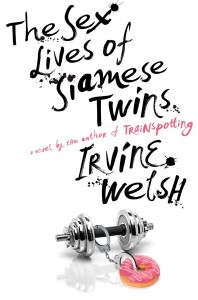Great insider information about how to get successfuly published and be a professional writer from Susan Bolotin, Grand Poobah of one of the greatest publishers in the world, Workman Publishing.
Tag: how to find an agent
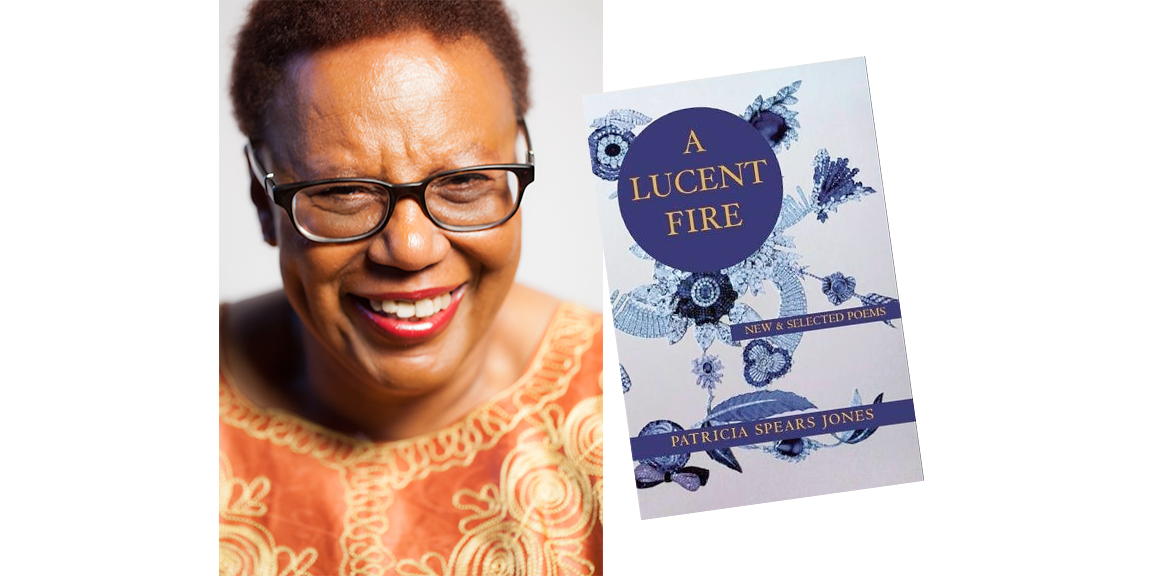
The incredible poet Patricia Spears, Jones talks about being a poet, writing poetry, being a publisher, finding your community of writers, getting your poetry out into the world, and building your career as a poet

Grant Faulkner, Dir. of National Novel Writing Month, or NaNoWriMo for short, talks to The Doctors about overcoming discouragement from others, crashing your own gate, writing a terrible first draft, editing it so it gets better and better, and becoming part of a community of writers who support and nourish each other.
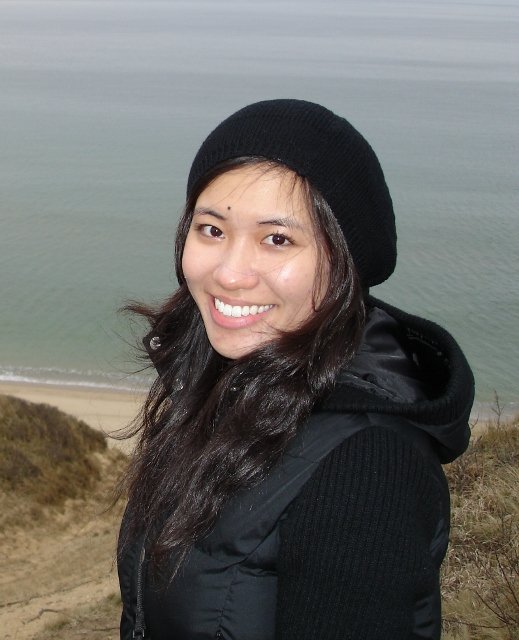
This is originally from a great website called Novel Pitch.
Gloria Chao was the winner of the 2015 Pitchapalooza contest put on by The Book Doctors. She and I connected via twitter. The following is her experience from the event. 
I am honored that NovelPitch has invited me to share my experience pitching in The Book Doctor’s 2015 Pitchapalooza contest. I’m a strong supporter of writers helping writers, and am excited to give back (though I wish I could give more!) to the community that has helped in my journey thus far. Thank you, Ralph, for your Novel Pitch efforts, and thank you, fellow writers, for your constant support.
I heard about the Pitchapalooza contest through Twitter and submitted my query. Based on The Book Doctors’ comments, I believe my pitch stood out because of the specifics—namely, the wording and humor. Since my novel is multicultural, I used words that gave a taste of Chinese culture, e.g. “sticking herself with needles” and “fermented tofu.” I also highlighted the wacky characters with phrases such as “expiring ovaries,” “unladylike eating habits,” and “Taiwanese Ivy Leaguer.” I think capturing the manuscript’s voice in the query was why my pitch was chosen.
Winning Pitchapalooza gave me confidence and the courage to keep fighting. It also helped bring my manuscript to the next level. I had struggled with my genre, pitching NA contemporary for the contest. The Book Doctors helped me realize this was the incorrect categorization, pointing me toward adult with suggestions to age up my manuscript by changing from first person to third. This released a flood of ideas, and I spent the next several months rewriting—adding 24K words, changing the POV, and writing with a women’s fiction audience in mind. I ended up with a manuscript that finally felt right.
The journey to publication is infamous for being long and relentless, but enjoying the small accomplishments along the way (and the writing, of course!) is what keeps me motivated. Putting ideas into words, sharing work with others, getting a personalized rejection, receiving a request, winning a contest—these are all achievements that require courage and are worth celebrating. And the writing community, including myself, will always be happy to celebrate with you!
Here are some of my tips for making your query stand out:
- If you’re new to querying, check out Query Shark, published authors’ blogs, Writer’s Digest, and craft books.
- Keep the 250 word count in mind, but only at the end. When you first start, just write. You’re more likely to have gems if you’re whittling down.
- Avoid clichés, generalities, and obvious stakes. Use unique words to convey your voice (and do this in your manuscript as well).
- Cut out every word that’s not essential. Too much detail bogs the story down.
- When you think your query is ready, get fresh eyes on it—family (my husband read a thousand versions of my pitch), friends, and other writers you meet through Twitter. Start with those familiar with your book, then end with people who know nothing about it. The latter will help identify confusing elements and will let you know if the pitch as a whole is not grabbing enough. Then, seize every critique opportunity by entering contests.
You can read Gloria’s winning pitch for AMERICAN PANDA here.
About Gloria:
I earned a bachelor’s degree from MIT and graduated magna cum laude from Tufts Dental—the perfect Taiwanese-American daughter. Except I wasn’t happy. To get through practicing dentistry, I wrote. It took years to gather the strength to push my dental career aside, against my parent’s wishes, to pursue writing full-time. Our relationship suffered, but my most recent novel, AMERICAN PANDA, strengthened our bond by forcing me to ask questions I never dared before. Now, my mother and I laugh about fermented tofu and setups with the perfect Taiwanese boy (though I think she still worries about my expiring ovaries).
You can find out more about Gloria at her website and on twitter.
Website: https://gloriachao.wordpress.com/
Twitter: https://twitter.com/gloriacchao
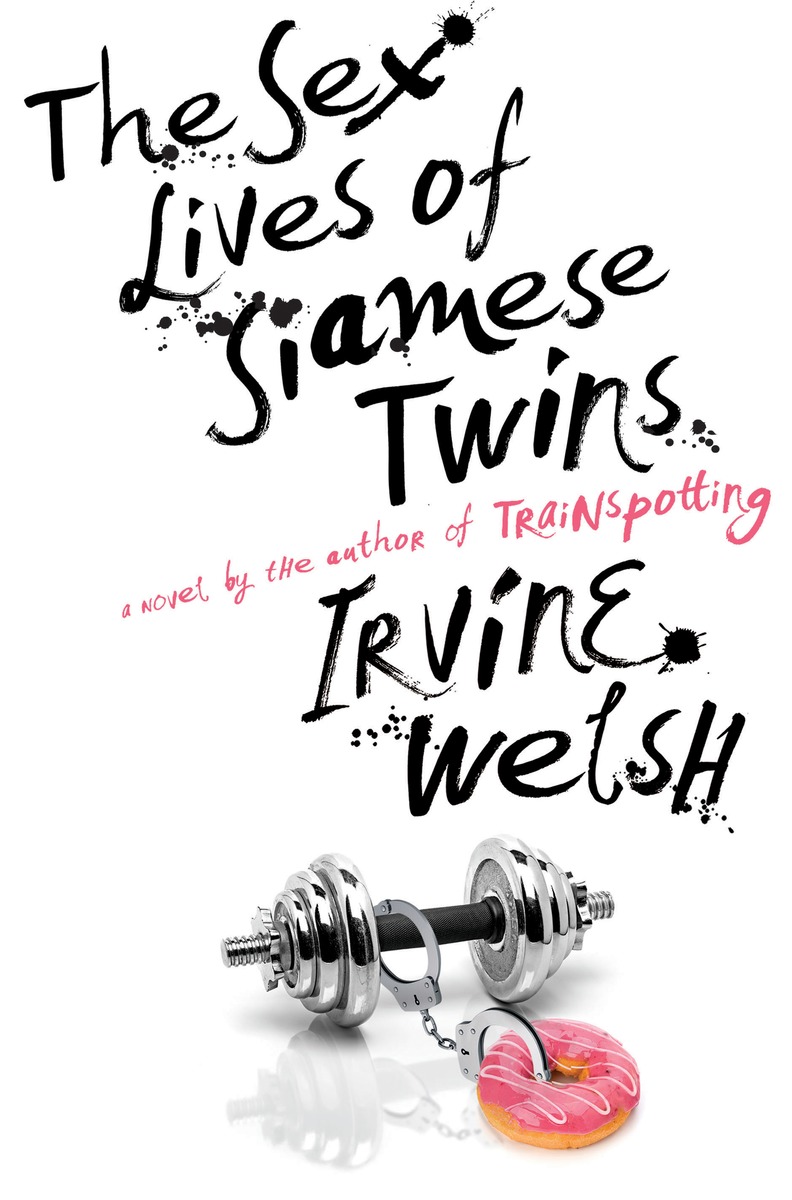
To read on Hoff Po click here.
Well, he’s at it again. Yes, Irvine Welsh has produced another wild tale full of maniacal madness. The Sex Lives of Siamese Twins. Naturally it’s got Siamese twins sexing it up and being surgically sawn in half. Murder, envy, fat chicks, lunatic kidnappers, media feeding frenzy, dildos pumping away like there’s no tomorrow . But this book is very different. First of all, it’s set in sun-splashed Miami, where Mr Welsh currently has one of his residences. It’s also written from the perspective of two women. And two women who couldn’t be much different from each other. I must confess I loved this book. I devoured it in a weekend, like a junkie binging on China white. You know, the good shit. And this book really actually changed my life. I became horrified by how much empty-calories I was shoving down my pie hole and I’ve been working out like a psycho-trainer was screaming in my ear about how I had to feel the burn. So I thought I would pick the brain of Mr Welsh and figure out how, & why, he did it.
The Book Doctors: What inspired you to write a book that is so incredibly different from the dark, beer-stained, junky-filled landscape of Scotland that made you famous?
Irvine Welch: Miami – a different world altogether from Scotland, a much more visual, body-obsessed culture. I’ve a place there and I’m in the town often.
TBD: Many successful writers seem to write the same book over and over and over. But this book is so far removed from what your fans are used to. Did you think about that in terms of the Irvine Welsh brand? Do you feel pressure, either from yourself, or from your publisher, to just stick with what you already know works?
IW: I don’t think so. I love writing about where I come from, but you also need to step outside your comfort zone from time to time. Unless you are doing genre fiction and are more conscious of deliberate brand building, you can only really write the book you write. I have a blank page and that’s a great luxury. I don’t need to start the first sentence with ‘Harry Potter said…’ or ‘Inspector Rebus rose early…’ and that’s a luxury. I can bring back Begbie or Juice Terry, but only if they are the right tools for the job. In this case they weren’t, so I created Lucy and Lena to tell the story.
TBD: Was it difficult to write in the voice of 2 women who are American & so removed from the dialect of your home turf? What are the methods you used to capture these voices?
IW: The biggest problem isn’t so much the language and dialect. I’m quite tuned into that through living in the States and being married to an American. The toughest thing is the cultural references, all the TV shows etc, that inform conversations. I had to make sure a lot of American friends saw early drafts.
TBD: The main character in the story seemed to me to bear a striking resemblance to Frank Begbie, the notoriously violent psychopath in Trainspotting. Except for the fact that she’s a bisexual body trainer who (mostly) disdains alcohol. What draws you to these extreme characters and how do you manage to get into their heads so successfully?
IW: I like uncompromising characters. They are tough to deal with in real life, but great fun in fiction. With a character who is ‘out there’ you can literally have them do anything. That’s a blessing for a writer
TBD: I don’t want to spoil the plot, but there’s such a fantastic switch, actually several of them, toward the end of your book. Do you outline where your story is going? How do go about constructing plot?
IW: I tend to let the plot come from the characters. Sometimes I might have a vague idea of where I want to go, but I like to throw away my GPS and give them the wheel. “Take me to Miami…or anywhere else interesting” is my only instruction.
TBD: How is it that you’ve managed to get away without ever using quotation marks?
IW: I hate quotation marks. I read a Roddy Doyle novel years ago when I was starting out – The Commitments- and his use of the dash seemed to convey the urgency of the characters better. So it’s Roddy’s fault!
TBD: I was fascinated by the theme of numbers. Did you do a lot of research for this book?
IW: Numbers and stats are huge in America. Especially sports. The idea of measurement is ubiquitous. I did a fair bit f research, but not as much as might be imagined. I suppose watching sports and reality TV is research…
TBD: When I am in Europe, the only fat people I seem to see are American tourists. This is of course one of the big themes of your new book. Why do you think Americans are so fat?
IW: The rest of the world is catching up! But consumerist culture is huge in America, as is fast food. You put those two together and you are heading for lardland.
TBD: Have you ever had a book rejected?
IW: Yes, I wrote a terrible ‘experimental’ novel for my third book. My editor said something along the lines of ‘this is shit. You’re just trying to show off. Go and write the book you really want to write.’ So I binned it and came back with Marabou Stork Nightmares, which is a book I’m very proud of.
TBD: Do you have any tips for writers who want to you explore the dark parts of human nature that would seem, at first blush, to be difficult to sell to the mainstream of the book world?
IW: If you think about the market you are in a very different game. Write what you want to write; work out how it sell it when it’s done.
Irvine Welsh is the author of Trainspotting, Ecstasy, Glue, Porno, Filth, Marabou Stork Nightmares, The Acid House, Skagboys, and, most recently, The Sex Lives of Siamese Twins. He currently lives in Chicago, IL.
Arielle Eckstut and David Henry Sterry are co-founders of The Book Doctors, a company that has helped countless authors get their books published. They are also co-authors of The Essential Guide to Getting Your Book Published: How To Write It, Sell It, and Market It… Successfully (Workman, 2010). They are also book editors, and between them they have authored 25 books, and appeared on National Public Radio, the London Times, and the front cover of the Sunday New York Times Book Review.

We met Peter Reynolds at the New England Society for Children Book Writers and Illustrators Conference, when he gave one of the best talks we ever heard. Whimsical and serious, passionate and jovial, wise and yet curious, Mister Reynolds was everything you’d want in a wildly successful picture book writer. Plus, he was inspiring. Much like his books. The Dot, which has become a classic, is deceptively simple. Like all great books, it works on many levels. It can be read as a simple romp. It is also a child’s coming-of-age story. On a deeper level it’s about Art, how people become artists, and how the Artist torch is passed from one generation to the next. So we thought we’d sit down with him and have a little chat about kids, writing, art, and life. By the way, if any writer has an interest in writing a book for kids, all the way up to Young and New Adult, you’re crazy not to join the SCBWI, and going to their conferences. They have chapters all over the country. They are awesome.
The Book Doctors: How did you get into the business of professionally writing books for kids?
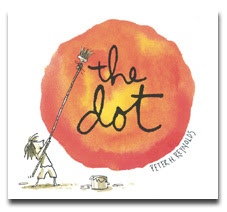
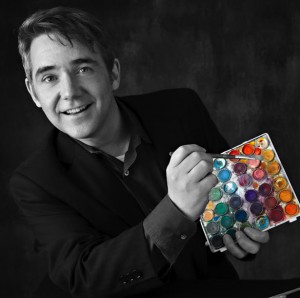 Peter Reynolds: I took the Long and Winding Road at the junction of Serendipity and Daydreaming. So many things “set the stage” for me being a writer for children (and grown up children), but I owe a lot to my daughter, Sarah Reynolds whose voracious appetite for stories demanded that I start coming up with stories to supplement what we could fit on her shelves or take from the library. Writing for her reset my creativity compass. You can get lost among the forests, swamps, and thickets of possible plots and characters, but she helped me focus on telling her a story- and instinctively I felt a need to give her something worthy of her intelligence and perhaps a scrap or two of wisdom I had clumsily gathered along the way.
Peter Reynolds: I took the Long and Winding Road at the junction of Serendipity and Daydreaming. So many things “set the stage” for me being a writer for children (and grown up children), but I owe a lot to my daughter, Sarah Reynolds whose voracious appetite for stories demanded that I start coming up with stories to supplement what we could fit on her shelves or take from the library. Writing for her reset my creativity compass. You can get lost among the forests, swamps, and thickets of possible plots and characters, but she helped me focus on telling her a story- and instinctively I felt a need to give her something worthy of her intelligence and perhaps a scrap or two of wisdom I had clumsily gathered along the way.
TBD: Teachers have played such a big part in your development as an artist (& a human it would seem), why do you think we undervalue teachers so radically & horribly in our society?
PR: How long do we have? Seriously, I could go on for days on this subject. I actually think most of us DO value the role of teachers, but we allow politicians and policy makers–who spend little to no time with children in learning environments–to strip away the resources and flexibility for great teachers to “do their thing.” If our government could control restaurants the way they do schools, you’d find Gordon Ramsey working as a fry cook at McDonalds. America takes pride in being independent and innovative. Our public education system-being a system–inherently strives to be efficient and in doing so, chops out all the “messy bits.” It’s this very “fringy” stuff that is required for innovation.
Book Doctors, you’ve inspired me to go out and hug the nearest teacher and cheer them on. Actually, the creative teachers DO know how to sneak in the good stuff. That, combined with the fact that technology is getting cheaper and into the hands of kids, is about to transform radically the world of schools as we know them.
TBD: How do you go about developing a picture book story? What’s your process, from idea through publication?
PR: We should have booked a week long Caribbean cruise. Here’s the nutshell version: My “story radar” goes off, I jot the idea down, and sometimes just one image or even a rough version of what the cover might look like. I roughly storyboard the images and add captions. I share with a few people. I read it out loud. Finesse and tweak. Then I share it with my agent, Holly McGhee at Pippin Properties who is a fabulous editor, thinker and guide. Then it’s on to find the right publisher. Once the book has a “home,” I work with the editor and art director to refine. The sales team gets into the mix when it comes time to confirm or change the title of the book and create the cover. When we’re all happy, it goes off to the printer and the long wait begins before getting that first preview copy. It may be a few months after that before the book shows up on bookshop shelves. That whole process can be squeezed into a year, but most often–from spark to finish–it can be about two years.
TBD: You seem to have many projects going on, how do you juggle all of them, running your business, and having a life?
PR: I do indeed, but I have great people around me to help get it all done. I have my wonderful team in Boston, FableVision, my bookshop staff at The Blue Bunny, my agents at Pippin Properties, among other great friends and colleagues. Balance though is key. I’ve worked hard in the past few years to get the formula right. Less is more. Less travel, more time with my 3 year old son. I have a new studio called The Sanctuary which, in theory, is my very own thinking and creativity temple, but I do occasionally find my son sprawled out painting mostly on sheets of paper, but also the floor. He actually reminds me of what freedom really looks like.
TBD: I’m so jealous that you have a twin. What’s that like?
PR: For me, it’s amazing. We both feel blessed. Not sure how you “singletons” do it. The journey is so much easier when you have a twin to share it with. While we are technically “identical” twins, Paul is not a “duplicate” of me. He is the being who is connected to me and able to extend my sensing of the universe (and vice verse.) It’s like two spaceships shooting in opposite directions to explore the universe, but in constant communication and transmitting to the one database back at ground control.
Our advice to everyone, if you don’t have a twin- go out there and find one!
TBD: So many picture book authors stress the lesson they’re trying to teach kids instead of character & story. Could you address this?
PR: I think that is a common trap. That “being on the nose” is a fear that kids won’t “get it.” Kids are mighty smart and they can smell “a lesson” a mile way. Hey, sometimes it’s a place to start, so whatever works for you, but then try to find a more creative way to get the audience to “connect the dots” after they’ve closed the book.
TBD: Why do you think there is a prejudice against rhyme in the picture book world?
PR: Well, on a practical note, rhyming books make it difficult to translate into the many other languages on the planet. It would be a real doozy to find equivalent words for “kale” and “pail” in Persian. Having said that, I think you can put that on ignore and just make a rhyming story that works. Rhyming books, done well, are a lot of fun to read aloud. My upcoming book collaboration, YOU & ME is a rhyming delight from Susan Verde. Do what makes you happy and the kids around you.
TBD: What are the greatest joys & frustrations about writing picture books?
PR: It is mostly JOY. I absolutely love sharing my stories with so many people around the world. Seeing the “ripples” that just one story can make is a “wow.” International Dot Day is a great example. Over a million teachers and students put down their regular work and tests on Sept 15th to celebrate creativity.
The frustration is having to schedule creativity. The publisher might have a deadline for a book due in September which means that I have to be ready to roll and really feel it in January. Trying to find that “surfer’s perfect wave” in the middle of a cold, winter’s day might not happen. Eventually, a wave appears and you ride it in to shore.
TBD: How did The Dot become such a great success?
PR: The Dot was my way to come to rescue of children (and adults) whose creativity and confidence had been steamrolled. As it turns out, there are plenty of folks facing this challenge. While it often gets labeled as an “art book,” the idea is really about bravery. Bravery is a universal concept. That helps a book find a big audience.
TBD: What advice do you have for beginning writers trying to break into the picture book racquet?
PR: Start with a real story. A startling memory of your own. A wee bit of advice your Dad shared. A wish you have for yourself – or for the world. Find the idea you know or believe in. One that you’d be very sorry if you lost along the way.
Find your network. Could just be your “twin,” or it could be a gaggle of Twitter friends, or the kids at the local library, or an organization like SCBWI .
Be brave. Make ONE book where you throw out all the rules, all the advice you have been given, all the notes in all the writing workshops, and create something just for YOU.
The most important advice I can give is this: KEEP GOING, NEVER STOP.
I’m planning on doing the same.
Peter H. Reynolds is the author and illustrator of the Creatrilogy series which includes The Dot, Ish, and Sky Color (Candlewick Press/Walker Books) Other books in his collection include I’m Here (Simon & Schuster), The North Star (Candlewick Press/Walker Books), as well as many collaborative works, which include The Judy Moody series (Candlewick Press/Walker Books) with Meghan McDonald. He is also co-founder of FableVision, a children’s media studio in Boston. His family runs The Blue Bunny Book & Toy Store in his hometown of Dedham, Massachusetts.
Arielle Eckstut and David Henry Sterry are co-founders of The Book Doctors, a company that has helped countless authors get their books published. They are also co-authors of The Essential Guide to Getting Your Book Published: How To Write It, Sell It, and Market It… Successfully (Workman, 2010).
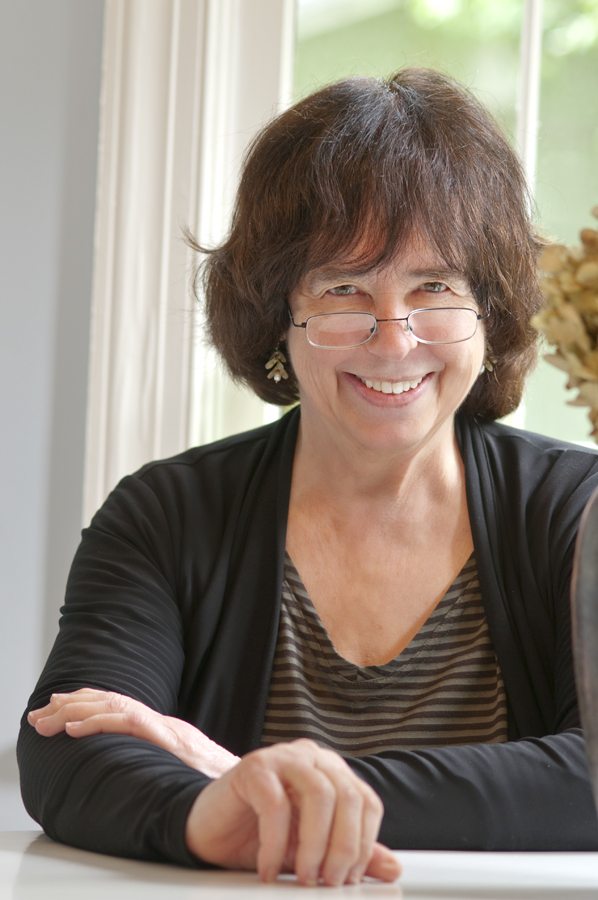
To read on Huffington Post click here.
One of the great things about attending a great writer’s conference is that you get to bask in the glow, and imbibe the wisdom of, great writers. The New England Society for Children’s Book Writers and Illustrators Conference was just such a conference. For anyone who loves writers, writing, books, and/or wants to be a writer of books, to be in the company of great thinkers and writers who are willing and able to articulate some of the truths that they have uncovered along the way is like being invited backstage at a convention for wizards, gods and goddesses. Since this was our first SCBWI where we were going to present, we were a little nervous. But everyone was so welcoming, kind and nice. And one of the true gems of our time at the conference was getting to listen to Jane Yolen talk about writing, books and never giving up.
The Book Doctors: Let’s start at the very beginning: how the heck did you get into the crazy business of writing books for kids?
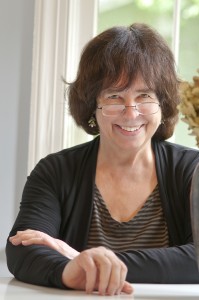
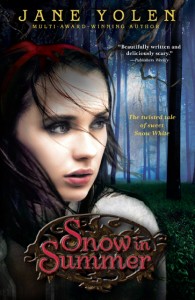
Jane Yolen: I began as a journalist for my pocketbook and a poet for my soul. Turns out I was a lousy journalist, so began working for (in order) Newsweek (research department), This Week magazine (researching facts checking), Saturday Review (in the production department,) Gold Medal Paperback Books (an Associate Editor go-fer and first reader).
Took a children’s book writing course, sold a nonfiction book for middle grades on women pirates and a rhymed concept picture book both to David McKay & Co, and they came out in 1963. The rest is history.
So in order to make a living, I worked for a children’s book packager for a year, then Knopf as Asst. Children’s Book editor for three and a half years, selling six more books to Macmillan, Seabury, and Funk & Wagnalls children’s books departments, went to Europe in a VW bus with my husband for almost a year (well, it WAS the 60’s after all!). Came home eight months pregnant, moved to Mass. and was a freelance writer for real after that.
That’s the short form.
TBD: You seem so unbelievably prolific, how do you find the time to do everything you’re doing?
JY: I love my work, have always been able to lose myself in stories and poems, and have been incredibly lucky as well.
TBD: Do you find there are difficulties with producing so much work?
JY: Of course. No one publisher sees me as “their” author, which means I often get short shrift in the promotion department. Also, it’s hard to sustain a body of work that’s spread about so widely and wildly dissimilar. When you realize my best selling books are Owl Moon, the How Do Dinosaur books, and Devil’s Arithmetic, how can the public make sense of that! I have fans who think I only write picture books or only write SF and fantasy. I have fanatics of my poetry and are stunned to find out I write prose, too!
TBD: In your incredibly inspirational keynote speech at the annual New England Society for Childrens Writers and Book Illustrators, you mentioned that, despite having won so many awards and published so many books, you sometimes will get five rejection letters in a day. I found that strangely and incredibly comforting. How do you deal with rejection?
JY: Knowing that an editor is not rejecting me but is rejecting the work, helps. Remembering that Owl Moon was turned down by five editors, that Sleeping Ugly was turned down by thirteen, and they are both still in print 25 plus years later. Knowing that Madeleine L’Engle’s A Wrinkle in Time was turned down by 29 publishers and then won the Newbery. That Dr. Seuss’s To Think I Saw It on Mulberry Street by even more publishers and almost 50 years later is still a bestseller also helps. And, as my late husband used to remind me, it’s harder to sell a great book to a publisher than a good one.
TBD: What you think are the keys to writing a successful picture book?
JY: Compression, lyricism, child-centeredness, and leaving room for glorious pictures.
TBD: How you go about promoting and marketing your books?
JY: I speak at conferences, do library readings, am loudly on FaceBook and Twitter, work with SCBWI, do interviews with anyone who asks (!), have Susan Raab as a publicist, write essays for places like Huffington Post, send a poem a day to 400+ subscribers, etc etc. Just like everyone else, I scramble. At 75 my scrambling is a bit slower than it’s been before, but it doesn’t stop me as much as it should!
TBD: Does being a poet influence your writing, both in picture books, and in longer works of prose?
JY: Absolutely. In picture books, it helps with the lyricism and compression that is so much a part of good picture book writing. But it is also a hallmark of my novel writing as well. I read everything aloud, novels as well as picture books. I believe the eye and ear are different listeners. So as writers, we have to please both.
TBD: What is the editing process like when you’re working on a picture book?
Reading it aloud over and over. Reading it to my critique group and listening to what they say. Showing it to my daughter Heidi Stemple who is a fabulous (and thorough-going) editor with great judgment. (As I used to show it to my husband when he was alive.) Trusting them and my agent to be honest with me.
TBD: I hate to ask you this, but what advice do you have for writers?
JY: Join SCBWI, the best money you will ever spend. Don’t be afraid to go to conferences,critique groups, have a beta reader (or several), but in the end trust your own judgment. Read what’s out there, then read and read some more to get a sense of how your work runs with or exceeds the pack. Don’t ever write just for a trend or fad because it’s a moving target and by the time you get your work out there, the trend or fad is gone. Dig deep, don’t be afraid to write fiercely, expose your heart. Also while you must remember publishing is a business and has to make money to stay in business, that shouldn’t be your motivation. Writing the book in your heart should be. But still you need to go armored into the publishing world, understand it, not be overwhelmed by it. Consider the editor your voice at the company while always being aware that she is also EMPLOYED by the company. It’s a tightrope for them. Don’t expect they will necessarily be on your side in every battle, even as they publish you. Don’t treat the editor as an adversary, but also don’t expect her to be your best friend. When doing business, put on your shark hat. When writing, put on your storytelling hat.
AND DON’T FORGET TO HAVE FUN AND TELL GREAT STORIES.
Jane Yolen, often called “the Hans Christian Andersen of America,” is the author of over 360 books, including OWL MOON, THE DEVIL’S ARITHMETIC, and HOW DO DINOSAURS SAY GOODNIGHT. The books range from rhymed picture books and baby board books, through middle grade fiction, poetry collections, nonfiction, and up to novels and story collections for young adults and adults.
A graduate of Smith College, with a Masters in Education from the University of Massachusetts, she teaches workshops, encourages new writers, lectures around the world. Her books and stories have won an assortment of awards–two Nebulas, a World Fantasy Award, a Caldecott Medal, the Golden Kite Award, three Mythopoeic awards, two Christopher Medals, a nomination for the National Book Award, and the Jewish Book Award, among many others. She is also the winner (for body of work) of the Kerlan Award, the World Fantasy Assn. Lifetime Achievement Award, Science Fiction Poetry Association Grand Master Award, the Catholic Library’s Regina Medal, the du Grummond Medal, and the Smith College Medal. She was the first woman to give the St Andrews University’s Andrew Lang lecture since the lecture series was started in 1927. Six colleges and universities have given her honorary doctorates. Also worthy of note, her Skylark Award–given by NESFA, the New England Science Fiction Association, set her good coat on fire. If you need to know more about her, visit her at jane.yolen.com.
Arielle Eckstut and David Henry Sterry are co-founders of The Book Doctors, a company that has helped countless authors get their books published. They are also co-authors of The Essential Guide to Getting Your Book Published: How To Write It, Sell It, and Market It… Successfully (Workman, 2010). Arielle Eckstut has been a literary agent for 20 years at The Levine Greenberg Literary Agency. She is also the author of eight books and co-founder of the iconic brand, LittleMissMatched. David Henry Sterry is the best-selling author of 16 books, on a wide variety of subject including memoir, sports, YA fiction and reference. His books been translated into 10 languages, and he’s been featured on the front cover of the Sunday New York Times Book Review. They have taught their workshop on how to get published everywhere from Stanford University to Smith College. They have appeared everywhere from The New York Times to NPR’s Morning Edition to USA Today. Twitter: @thebookdoctors
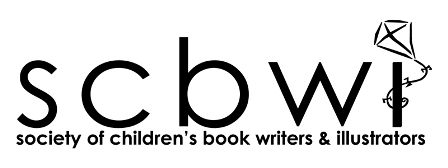
We first became aware of the Society for Children Book Writers and Illustrators a few years ago when David’s middle grade novel came out, and he was invited by Penguin to the national SCBWI conference in Los Angeles. It was totally mind-blowing. Wall-to-wall writers, artists, agents, editors, book people of all ilk who were madly passionate about kid’s books. Since then we’ve send countless writers to SCBWI. They have regional chapters all over the country, and a large national presence. This year we were asked to bring our Pithcapalooza (think American Idol for books) to the annual SCBWI New England chapter’s conference, and we thought we’d take the opportunity to pick the literary brain of SCBWI’s own Kristine Carlson Asselin, who is a very accomplished writer in her own right.
The Book Doctors: How did you first become associated with SCBWI?
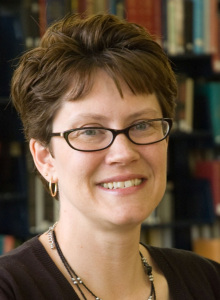
Kristine Carlson Asselin: In 2007, I was hoping to break into writing for children. I’d finished several picture book manuscripts as well as the short story that would later become my first completed novel. I attended a one-day workshop sponsored by SCBWI New England. It literally rocked my world. Before then, I had no idea that writers and illustrators came together to learn from each other. Soon after that fall workshop, I attended my first regional conference, held in Nashua, New Hampshire.
That first year, I felt like a poser. I thought for sure someone would see through the façade and kick me out! But everyone I met treated me like a “real” writer. I was hooked. In 2011, partly because I had previous event management experience, I was approached to co-direct a future conference. I spent two years shadowing the conference directors, and it’s been my great pleasure to serve in the lead role in 2014. It’s been the most amazing professional experience of my career.
TBD: What are some of the benefits of coming to the conference like SCBWI NE?
KCA: The SCBWI New England conference staff works hard to select a diverse menu of over 60 workshops for writers and illustrators of all skill levels, and writers of every genre of children’s publishing. Another tangible benefit includes the opportunity to network and rub elbows with literary agents, editors, and art directors. Intangibles include finding inspiration from our incredible keynoter speakers, fangirling (or fanboying) over your favorite children’s author, and making new friends and critique partners.
TBD: How has being part of an organization like SCBWI helped you in your writing career?
KCA: I can’t imagine where I’d be with my writing career, if I hadn’t stumbled upon that workshop years ago. I love being in the same room as successful authors and learning what works for them, and how to apply it to my own work. I’ve also met some amazing critique partners and beta readers, and dear friends through SCBWI.
TBD: What are some of the things you’ve observed that successful authors have in common?
KCA: All the writers I hang out with write for children, so I can’t speak for writers of books for grown-ups. However, children’s book writers are the some of the nicest, most generous people you’ve ever met. I think most people really embrace the concept of “paying it forward.” I’ve witnessed a lot of effort made by successful writers to mentor and advise newer writers and to “give back” to the universe.
TBD: What have you found effective in promoting and marketing your books? What are some of the things you’ve done that don’t work so well?
KCA: All but one of my published books have been written specifically for the school library market, so the publisher manages the marketing for those books. For me, the priority is to maintain a current blog and website, and to be helpful and supportive on Twitter and Facebook.
TBD: How did you first get into writing nonfiction books for kids?
KCA: I decided early in my career, I wasn’t going to pigeon-hole myself. I knew I wanted to write fiction for children, but I also wanted to experiment with different genres and styles. After my efforts to publish picture books stalled, I stumbled across the contact information for Capstone Press, the publisher of many of my nonfiction titles. I wanted to start something completely different from what I’d been working on. I sent the company my educational credentials and a writing sample, and they offered me my first contract. Of eleven books with Capstone at this point, that first book, WHO REALLY DISCOVERED AMERICA, is still one of my favorites.
TBD: How do you approach writing fiction differently that writing nonfiction?
KCA: I’m under contract for a Young Adult contemporary romance for Bloomsbury Spark (ANY WAY YOU SLICE IT is due out in late fall 2014). It started as a NaNoWriMo book. I wrote 50K words during the month of November–they were raw and awful, but it was so liberating to turn off my inner editor and write fast. I loved it! My nonfiction approach is to research first and then write an outline before I ever start the manuscript. VERY different from fast-drafting without my inner editor!
TBD: How did you go about getting your first publishing deal?
KCA: My first publishing contract for fiction came about from a twitter pitch! It’s true! I pitched a novel during #PitMad in the spring of 2013, and that pitch attracted the interest of Meredith Rich, of Bloomsbury Spark. It wasn’t a slam dunk–she still had to read and like my work. But ultimately that 140 character pitch turned into the contract for ANY WAY YOU SLICE IT.
TBD: What tips do you have for writers?
KCA: We all have different styles, and not everything works for everyone. But my very basic advice for writers is to write. You can’t get better at your craft without practice. So write. A lot. Take workshops, take classes, read blogs, read books in your chosen genre, have your friends give you writing prompts. Write. Write. Write. That’s the best advice I can give!
Kristine Carlson Asselin writes contemporary Young Adult & Middle Grade fantasy. She has written fourteen nonfiction books for the school library market with Capstone Press and Abdo Publishing, the newest (Dangerous Diseases) released in February 2014. She is one of the co-directors of SCBWI-New England this year, and her debut Young Adult novel, Any Way You Slice It, is due from Bloomsbury Spark in late fall 2014. She is represented by Kathleen Rushall of Marsal Lyon Literary Agency. Kris on Twitter: @KristineAsselin
Arielle Eckstut and David Henry Sterry are co-founders of The Book Doctors, a company that has helped countless authors get their books published. They are also co-authors of The Essential Guide to Getting Your Book Published: How To Write It, Sell It, and Market It… Successfully (Workman, 2010). Arielle Eckstut has been a literary agent for 20 years at The Levine Greenberg Literary Agency. She is also the author of eight books and co-founder of the iconic brand, LittleMissMatched. David Henry Sterry is the best-selling author of 16 books, on a wide variety of subject including memoir, sports, YA fiction and reference. His books been translated into 10 languages, and he’s been featured on the front cover of the Sunday New York Times Book Review. They have taught their workshop on how to get published everywhere from Stanford University to Smith College. They have appeared everywhere from The New York Times to NPR’s Morning Edition to USA Today. Twitter: @thebookdoctors

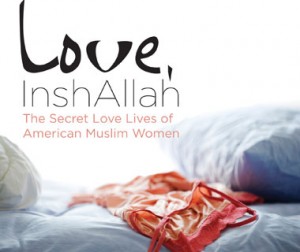 We first met Nura Maznavi and Ayesha Mutta at our Pitchapalooza during San Francisco’s legendary LitQuake. Lots of great writers pitched lots of great books that night. But when Nura pitched her anthology revolving around the love lives of Muslim-American women, we were blown away. She took charge of the room like a seasoned professional, she was funny, charming, articulate, and she had that indefinable It that makes people go: Wow! Plus, the book was so timely, so valuable, so necessary when the world is trying desperately to move from combative intolerance to respectful inclusion. From war and terrorism to peace and understanding. We helped them develop their proposal, hone their pitch, and when the time was right, we introduced them to a fantastic publisher who does exactly the kind of book they wanted to write. This is a mistake so many writers make. They don’t get their book into the hands of the person who is most likely to love, represent and/or publish it. In this case, that publisher was Laura Mazer at Soft Skull. As we suspected, she fell in love with the proposal, and offered them a contract. Right place, right time, right stuff. Nura and Ayesha gathered 25 Muslim-American women writers, and lo and behold, their pitch is now a book. Love InshAllah: The Secret Love Lives of American Muslim Women came out last week, and already they’ve had a feature in the New York Times written about them, and the demand has been so large, they sold out of the first printing practically before the book was even out.
We first met Nura Maznavi and Ayesha Mutta at our Pitchapalooza during San Francisco’s legendary LitQuake. Lots of great writers pitched lots of great books that night. But when Nura pitched her anthology revolving around the love lives of Muslim-American women, we were blown away. She took charge of the room like a seasoned professional, she was funny, charming, articulate, and she had that indefinable It that makes people go: Wow! Plus, the book was so timely, so valuable, so necessary when the world is trying desperately to move from combative intolerance to respectful inclusion. From war and terrorism to peace and understanding. We helped them develop their proposal, hone their pitch, and when the time was right, we introduced them to a fantastic publisher who does exactly the kind of book they wanted to write. This is a mistake so many writers make. They don’t get their book into the hands of the person who is most likely to love, represent and/or publish it. In this case, that publisher was Laura Mazer at Soft Skull. As we suspected, she fell in love with the proposal, and offered them a contract. Right place, right time, right stuff. Nura and Ayesha gathered 25 Muslim-American women writers, and lo and behold, their pitch is now a book. Love InshAllah: The Secret Love Lives of American Muslim Women came out last week, and already they’ve had a feature in the New York Times written about them, and the demand has been so large, they sold out of the first printing practically before the book was even out.
THE BOOK DOCTORS: So, this must be a very exciting time, congratulations, we’re so excited for you.
NURA & AYESHA: Thanks, it is. We worked so long and so hard on this book, and there were so many times when we were sure it would never happen, so to have all this great response been fantastic
TBD: So many writers don’t consider who their audience will be, or in fact if there is even an audience, before they write their book. Why did you write your book, and why did you think there would be an audience for it is?
N&A: People are fascinated by Muslim women, but we didn’t see ourselves or our opinionated, independent and intelligent friends reflected in media stories, TV plotlines or movies. We decided this was the perfect opportunity to raise our voices and begin telling our own stories. And what better stories to tell than love stories? As Muslim women, our roadmap to love may be unique, but the destination is universal.
TBD: Most writers don’t understand how important a pitch is. It’s what a writer uses to get an agent and/or a publisher, it’s what the publisher’s marketing team (if they have one) will send out to the media, what the sales team will use to get bookstores to carry your book, what will entice readers on your author page, and on the back of your book, it’s what booksellers will tell customers when they’re looking for a book like yours.
N&A: Exactly! That’s why we spent so much time writing the pitch and practicing it aloud, to make sure it flowed well, that it really displayed what was unique and valuable about our project.
TBD: We always tell people to pitch their book as often as possible. To friends and family of course, but to your mailman, your waitress, your priest, total strangers, whomever. Every time you pitch your book, it’s an opportunity to test market your product. To figure out what works and what doesn’t, and how to make it better. And we meet a shocking number of writers who are afraid to talk about their book because they’re scared someone will steal it. Or hate it. But if you don’t tell anybody about your book, there’s a good chance it will and up just being a file buried in your computer. And you never know who’s going to be friends with somebody in publishing. That’s how David got published. He told an old friend about his book. Unbeknownst to him, her goddaughter was a literary agent. She took him on as a client. Then she married him.
N&A: That’s so romantic!
TBD: In a very book-nerdy way.
N&A: Exactly.
TBD: Since you won Pitchapalooza with your kick-ass pitch, go ahead, lay it on us, what’s your book about?
N& A: Love InshAllah: The Secret Love Lives of American Muslim Women is a groundbreaking collection of 25 writers speaking openly about love, relationships, sexuality, gender, identity and racism for the first time. Everyone seems to have an opinion about Muslim women, even (especially!) those who have never met one. We thought it was about time you heard directly from Muslim women themselves. You’ll be captivated by these provocative, funny, moving and surprising stories — each as individual as the writers themselves.
TBD: What made you decide to pitch the idea at our Pitchapalooza?
N&A: Our book proposal was dead in the water, publishers were unwilling to take a chance on this book. When we heard about LitQuake Pitchapalooza in September 2010, we thought it might be an opportunity for us to go public with our hunch that our book’s simple but intriguing concept — American Muslim women’s lives and loves, told for the first time by the women themselves — would have a broad appeal. Pitchapalooza helped us refine our message and hook. The judges’ feedback was invaluable in developing our book proposal. And the audience was so excited about the premise that we knew we’d been right about its appeal!
TBD: What are some of the biggest misconceptions about American Muslim women, dating, and sexuality?
N&A: Muslim women’s lives and sexuality have been politicized by both non-Muslims and Muslims for centuries. On the one hand, we’re seen as oppressed, submissive, and voiceless, and on the other we’re asked to live within a limited definition of the “good Muslim girl”. Neither of these paradigms allows us to celebrate our personal lives, which are full of joy, creativity, beauty, challenges, doubts and mistakes. Both extremes seek to box us into a narrow “real Muslim woman” frame, but by telling our own stories, we are revealing a reality that is far more complex and compelling.
TBD: What were some of the challenges in putting together an anthology with all these women?
N&A: Editing was the most challenging and most rewarding experience of all. We spent a lot of time supporting our writers in taking their stories to the place of honesty and vulnerability that resonates with readers. And, through the process of editing, we developed wonderful relationships with each writer. We deeply love and respect them all!
TBD: Are you afraid that some fundamentalist Muslims will take offense at your book?
N&A: Fundamentalists certainly aren’t limited to Muslims, as we saw with the recent controversy generated by a fringe group in Florida over the TLC show All-American Muslim! There are some people on both sides who want to keep Muslim women tightly inside a box. That said, a filmmaker friend of ours visited over 200 US cities recently and brought back this message: People are tired of the politics of fear and are hungry to connect with each other in more meaningful and compassionate ways. We believe her, and we believe that the overwhelming majority of Americans are going to welcome and be excited by this book for that very reason. Any book is going to have its critics, but we’re confident that most people are going to celebrate these unique, thought-provoking and beautiful voices.
TBD: What’ve been some of the difficulties in dealing with the publishing world?
N&A: A Pitchapalooza judge said that large publishers are leery of taking risks on unknown writers or an untested market.
TBD: That’s why I thought Soft Skull would be perfect for you.
N&A: Absolutely. They’re a independent, cutting-edge publisher, and they respected our context and viewpoints on everything from the stories to the cover of the book, which can be a contentious and difficult issue for writers of color. In fact, the cover is a wonderful example of our partnership: The conventional image on most books about Muslim women is of a veil or veiled woman, even when it has nothing to do with the story or writer. After we explained why that was inappropriate, we found a gorgeous, novel and provocative image to use instead: lingerie! The lingerie strewn across the bed is a metaphor for the book: Muslim women revealing their most intimate thoughts and experiences to you.
TBD: What do you hope your book will communicate to the world?
N&A: We are proud to offer this book as our contribution to contemporary, multicultural American literature. We believe these stories will start conversations in families and between communities about the similarities that bind us together, and the differences that enrich us. We hope that this book inspires dialogues in the American Muslim community, particularly among women, who have been waiting a long time to have these discussions. We’re so ready to engage with each other! Regardless of our differences, we can choose to interact with each other in a compassionate and respectful way. By reading these provocative, funny and moving stories, you’ll discover that what we all have in common is the desire to love and be loved for who we are.
Ayesha Mattu & Nura Maznavi are the co-editors of the anthology, Love, InshAllah: The Secret Love Lives of American Muslim Women” (Soft Skull Press, 1/24/12). Facebook. Twitter. Amazon.
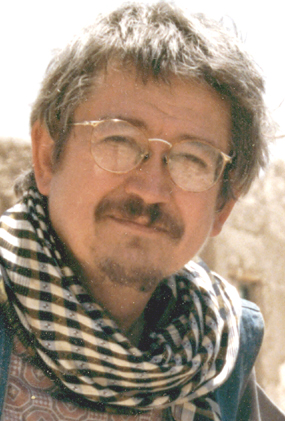

Tamim Ansary is the wisest man I know. Don’t get me wrong, in many ways he’s as big an idiot as you or I. For example, he’s not nearly as smart as his smartphone. But I know lots of clever geniuses who can make their smartphone dance the chachacha while reciting the Gettysburg Address, but none of them are very wise. Tamim says things that make you kick yourself and go, “Why didn’t I think of that?” And because he spent his Wonder Years in Afghanistan, and has a large web of family (many of whom, apparently, he has no idea he’s related to) in Afghanistan, he knows things that hardly any of us know. About how they think, how they live, who they are, what they want, these people with whom we are so intimately involved yet understand so little. Since he spent the last year or so writing a book about the history of Afghanistan called, Games Without Rules: The Often Interrupted History of Afghanistan, I thought I’d pick his big brain about a subject I want to understand, one which will, I hope, make me seem smarter at parties.
DAVID HENRY STERRY: Reading your book, it becomes more and more clear that Afghanistan has a long history of being invaded. Is there something particular about the people, the culture, the country that screams: Invade me?
TAMIM ANSARY: Afghanistan is the land in between. It’s the place where the age-old “great powers” to the north, west, south and east overlap. It’s the real estate that empire-builders have had to march through over the centuries to get to other, more desirable places. In the 19th century, Russia had to take this land to get to the Arabian Sea, which they coveted because it would at long last give them a year-round port and access to the oceans. Britain was determined not to let the Russians sink roots here because time and again over the centuries, empire-builders have swept down from this platform to conquer India — which was now Britain’s prize possession. In all the tussles of the twentieth century, the powers trying to invade didn’t care about Afghanistan per se. They invaded it so that their rivals would take it. In the mid-twentieth century came the Cold War. Now, Afghanistan was the nut between the pincers of the Soviet Union to the north and the U.S. and its allies to the south. Pakistan and Iran were firmly under U.S. control but Afghanistan was in play — non-aligned. If the U.S. could get it they really have a fence around Soviet power; if the Soviets could get it, they’d poke a hole through that “containment” fence. Once again, Afghanistan mattered for strategic reasons and no one (except Afghans) cared about who or what was actually in this territory. And strategically, Afghanistan still matters today. Oceans aren’t so important anymore, but Afghanistan makes a perfectly situated air-base. Planes taking off from here can reach Iran, China, India, all the Central Asian former-Soviet-republics, and even Russia.
DHS: In America we seem to have turned the Taliban into the bogeyman, like if we could just get this one group of evil villains under our thumb and into Guantánamo, the problem would go away. Reading your book, I now suspect that this is wrong. Who are the Taliban exactly? Who are they not?
TA: When they first emerged, the Taliban were a single, specific, cohesive group. They had a leader, they had top officials, they had cadre, they had an ideology. They were organized by elements in the Pakistan military, were bound together by a radical Islamist ideology, and served as a tool for Pakistani domination of Afghanistan. Their period of rule was, to some extent, just another foreign invasion of Afghanistan, just like those the British undertook. But then in 2001-02, the United States toppled and scattered that Taliban and they fragmented. Today’s insurgents, so frequently and so casually labeled “the Taliban,” are a motley hodge-podge of anti-government rural folks, remnants of guerrilla armies that roamed the land for two decades, drug traffickers, tribal lords whose power is threatened by the reemergence of a central government, newly emerging criminal networks, fragments of the original Taliban that have re-congealed as rural gangs, and so on. A few al-Qaeda-type Jihadists from the Arab world are sprinkled into the mix, and saboteurs from Pakistan are said to be active in Afghanistan as well; but then, “Talibanist” saboteurs from Afghanistan now roam into Pakistan as well, to make trouble. Basically, the area once divided by a distinct border between two countries (Afghanistan and Pakistan) has dissolved into a belt of unruly, anti-government (any government) militants whose power derives from local sources and amorphous demographic is who we are calling “the Taliban.”
DHS: When you hear about Afghanistan in American media you get the impression there is the Taliban and those against the Taliban. Is Afghanistan really divided like this?
TA: Afghan society features a continuum of values, attitudes, beliefs and affiliations. At one extreme are radical reactionary fundamentalist Islamists, and outward-looking, secular-tending, modernist urban folks friendly to Western values and ideas at the other extreme. But these are merely the extremes, Between the two you’ll find every shade of grey. So it’s not a case of the Afghans being one group and the Taliban another group, with the one attacking the other. It’s more a case of a culture torn by its own contentions and contradictions, a contest that goes a long way back into Afghan history.
DHS: What is my moral obligation as an American, when it comes to Afghanistan?
TA: When the U.S. went into Afghanistan they established a plan that would transform Afghanistan into a secular, Western-style parliamentary democracy and a society in which women participated in public on a par with men and enjoyed equal rights and opportunities. Many Afghan men and women staked their lives on this American project succeeding. They bought into it. They went into businesses that depended on the country moving in the direction the West had laid out. Women dared to emerge as activists, they ran for and won parliamentary seats, they challenged laws, they led demonstrations, they became public figures. If Afghanistan crumbles back into the sort of chaos that wracked it in the 1990s after the Cold War ended and all the foreign powers completely withdrew not just military but civilian and economic involvement in Afghanistan, the people who bought into the project are probably going to be in trouble. Many of them may perish. The U.S. has no choice but to move forward with a withdrawal of at least most of its forces, but this withdrawal has to be conducted in a responsible manner, with some guarantee that America’s partners in Afghan society won’t simply be overwhelmed.
DHS: How much of the U.S. involvement in Afghanistan is self-serving? And how?
TA: The U.S. has strategic interests in Afghanistan. For one thing, this will be the corridor through which oil and gas from the Caspian Basin will have to pass, in order to reach the West once that oil comes into play; so it’s important that Afghanistan be safe, stable and peaceful in that near future. Also, this land holds the key to the stability of the region as a whole. Chaos in Afghanistan would almost surely trigger chaos in Pakistan, would invite Iran to rush in, would bring China into the picture, which would trigger a reaction from India… Pakistan has nuclear bombs. Even as it stands, Pakistan is unnervingly reckless; if even this simulacrum of a state dissolves, there is no telling who of the many potential successor groups in the country will end up with those bombs. Powerful elements in Pakistan nurse an almost crazed paranoia about India, a hostility that has brought these countries to the edge of war within this decade — if an irrational group fueled by paranoia and hatred gets possession of Pakistan’s bombs, it might decide to settle matters once and for all with India — which also has nuclear weapons. (And now Iran could get such weapon-capability.) What America doesn’t seem to have, particularly, is a self-interested motive related to Afghanistan’s vaunted mineral wealth — the trillion-plus dollars worth of copper, iron, rare-earth minerals and such. The United States has made no move on those minerals, at a time when others, such as China, have worked vigorously to acquire the rights to them.
DHS: What do people think of Americans at this point in Afghanistan?
TA: Over these last few years, a number of events have eroded goodwill toward America among Afghans. Of course sporadic mistaken bombings of wedding parties, of rural children grazing herds, and of other civilians have contributed to this erosion. Of course, Sgt. Bales’ massacre of 16 civilians didn’t help. The NATO policy of conducting “night raids” to arrest suspected terrorists has been a public relations disaster. But to my mind, the single most consequential error was the incineration of Korans in a trash fire by soldiers at Bagram Air Base, especially because Western observers never really understood the gravity of this act in the eyes of Afghans. And yet… and yet… even though many people I spoke to there wanted NATO to leave, some of those very same people expressed the hope that they wouldn’t. All this, however, is in the cities. In the countryside, especially in the south and southeast, I imagine people are more uniformly hostile to the American presence.
DHS: What will it take to have peace in Afghanistan?
TA: There is no certain path to peace. Every road passes through difficult terrain. In the long run, the foreign powers have to find a way to declare Afghanistan a non-aligned zone whose neutrality all outside parties pledge to observe and respect. At the same time, an international consortium needs to oversee continued aid to Afghanistan, ideally to help the country take control of its own vast, rich mineral resources and to develop that wealth. Once outside interference in Afghanistan is curtailed, Afghans will begin to settle scores among themselves. This might be very painful for outside observers to watch, and it might be very tempting for one party or another to intervene in order to make sure the struggle comes out “the right way.” But the outcome in Afghanistan will be meaningful only if Afghans attain it on their own.
DHS: What should America do about Afghanistan?
TA: Build connections, contacts and relationships with all the various factions and forces in the country, leaving a door open to have a diplomatic relationship with whoever emerged as the ruling group, do the hard work of global negotiating needed to ensure Afghan neutrality in the global contests of today, and play a peacemaking role as best it can while gradually easing out of the scene. But that’s easy for me to say. The devil is in the details.
Tamim Ansary can be found at his website. His new book is available online or at a bookstore near you.


